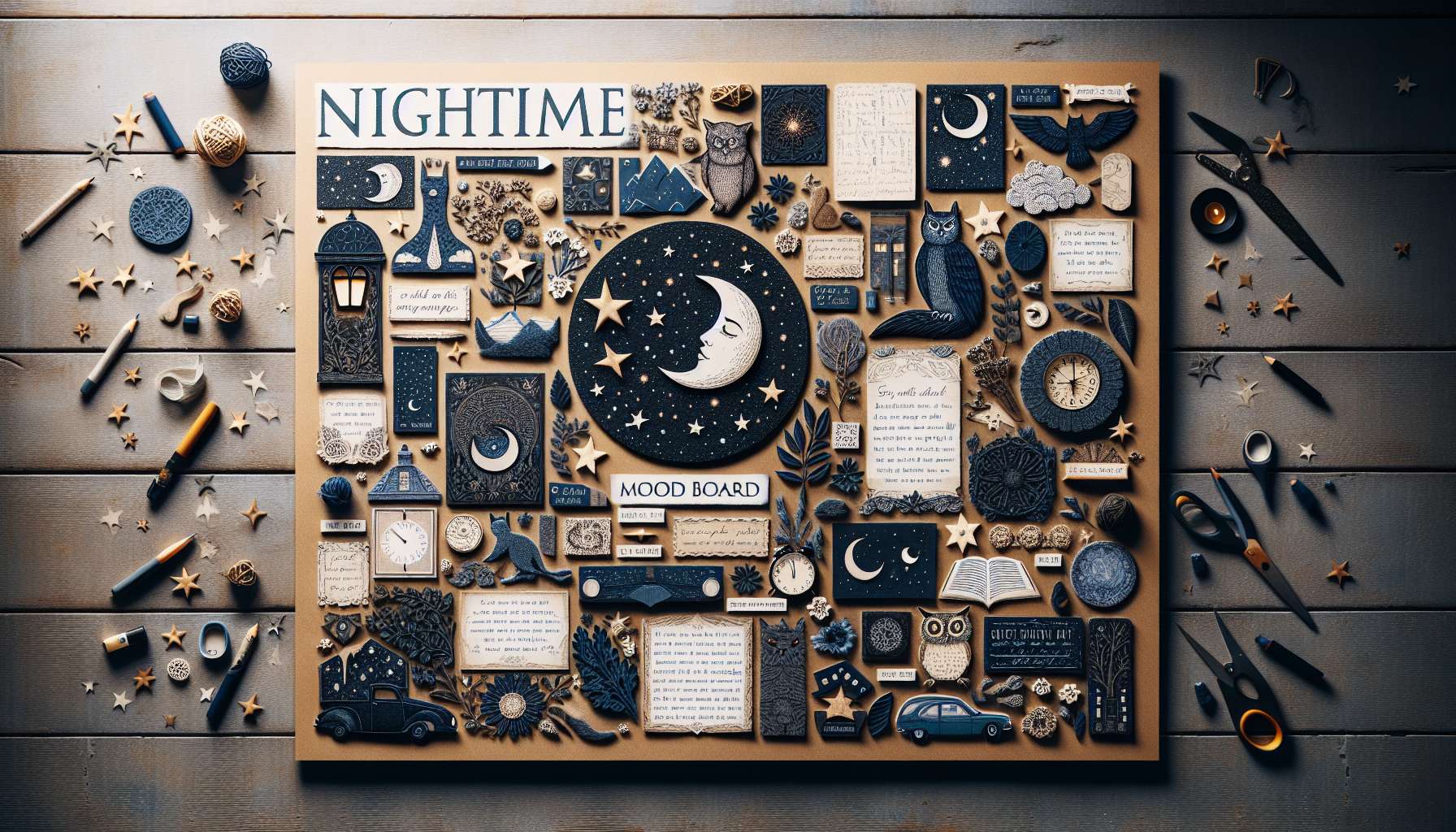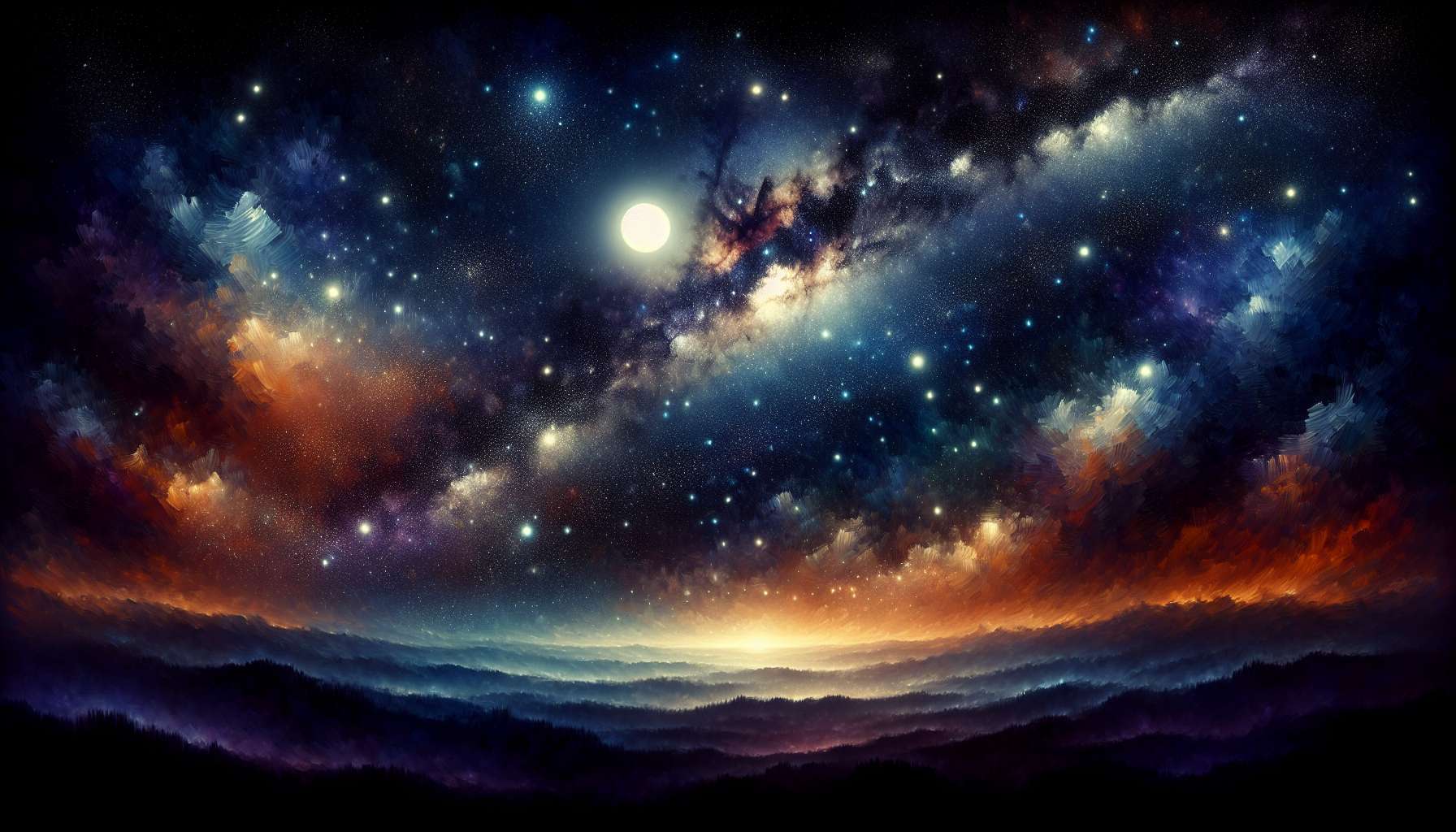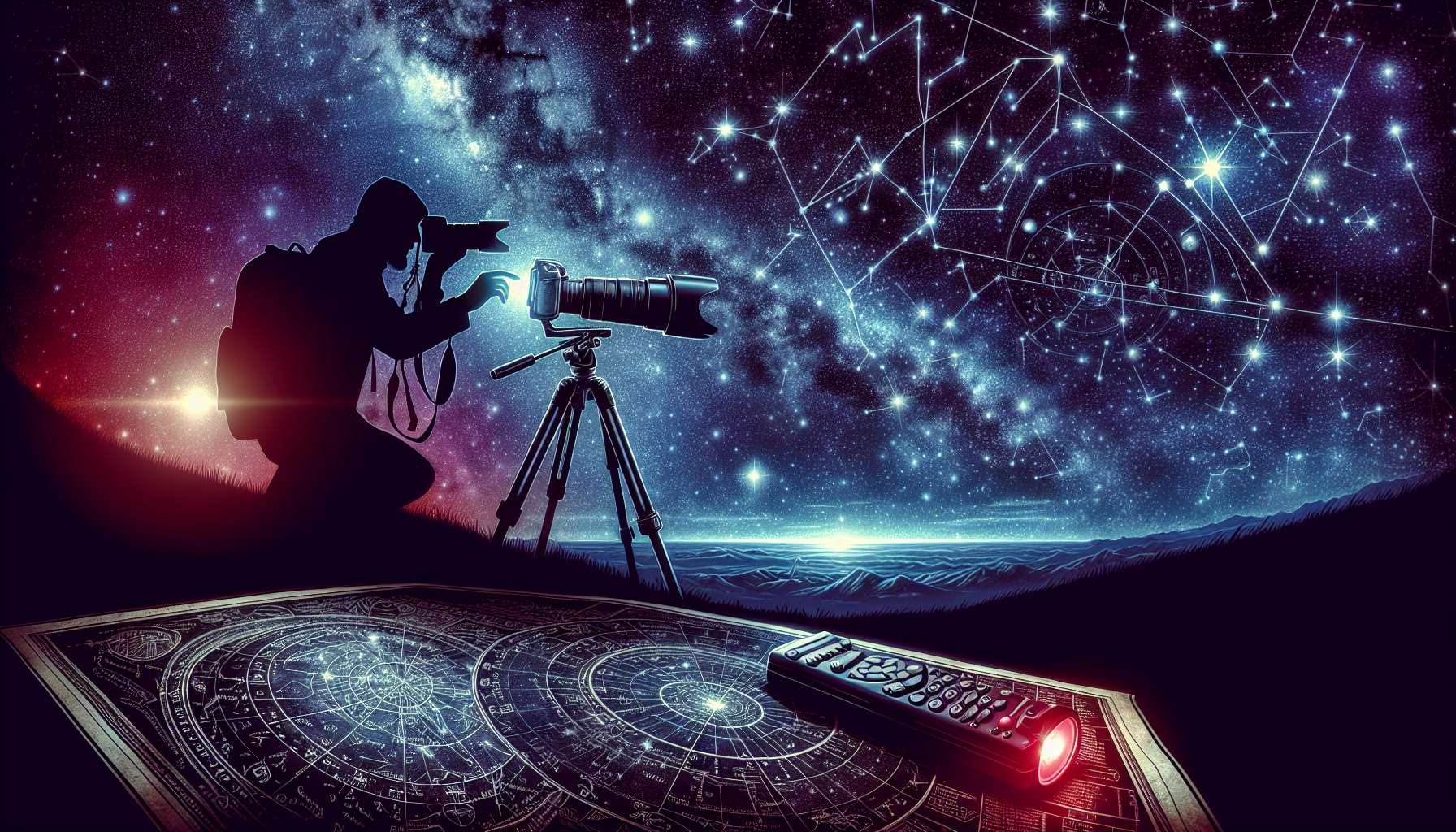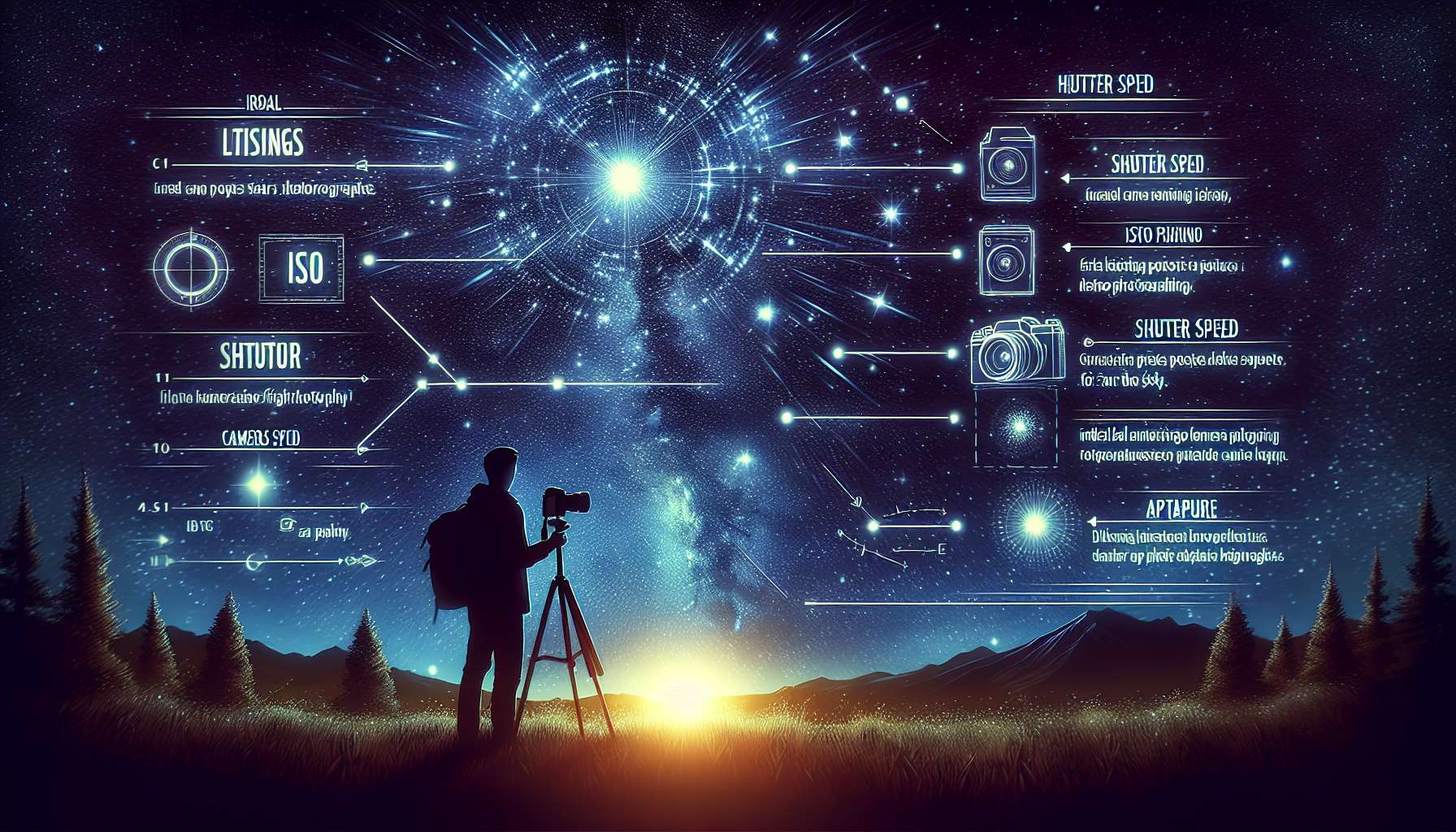Nighttime Mood Board Curation: Unleashing Creativity in the Dark
When the sun sets and darkness envelops the world, a unique realm of creativity awakens. Nighttime mood board curation, a practice often overlooked in the bustling daylight hours, offers a canvas for artistic expression, introspection, and innovation. As the night sky sparkles with stars and the world slows down, individuals find solace in curating mood boards that capture the essence of nighttime beauty, mystery, and emotion. In this article, we delve into the intriguing world of nighttime mood board curation, exploring its significance, techniques, and impact on creative endeavors.
The Art of Nighttime Mood Board Curation
Nighttime mood board curation is the art of compiling a collection of images, colors, textures, and words that evoke the essence of the night. Unlike daytime mood boards, which may focus on bright colors and energetic themes, nighttime mood boards embrace the darkness, shadows, and quietude of the nocturnal hours. These curated boards serve as visual representations of emotions, ideas, and inspirations that surface under the cover of darkness.
One of the key elements of nighttime mood board curation is the use of dark hues, such as deep blues, purples, and blacks, to set the tone for the board. These colors convey a sense of mystery, elegance, and tranquility that are characteristic of the night. Incorporating images of moonlit landscapes, starry skies, and nocturnal creatures further enhances the nocturnal ambiance of the mood board.
Moreover, nighttime mood boards often feature elements of introspection, contemplation, and solitude, reflecting the introspective nature of the night. Quotes, poetry, and lyrics that resonate with themes of mystery, longing, and introspection are commonly included to deepen the emotional impact of the board. Through the artful arrangement of visuals and words, nighttime mood board curation offers a platform for self-expression and creativity.
The Psychology of Nighttime Creativity
Research in psychology has shown that creativity and innovation are often heightened during the nighttime hours. The absence of distractions, the quiet ambiance, and the dim lighting of the night create an environment conducive to deep thinking, reflection, and creative exploration. The brain, freed from the demands of the day, is able to wander into uncharted territories of imagination and inspiration.
Moreover, the nighttime hours are associated with a unique cognitive state known as “hypnagogia,” a transitional state between wakefulness and sleep. During hypnagogia, the mind is in a relaxed and receptive state, allowing for the emergence of novel ideas, connections, and insights. This state of consciousness is conducive to creative problem-solving, ideation, and innovation, making it an ideal time for engaging in creative pursuits such as mood board curation.
By tapping into the psychological benefits of nighttime creativity, individuals can unlock new realms of imagination, self-expression, and innovation. Nighttime mood board curation offers a therapeutic and enriching experience that nurtures the creative spirit and fosters personal growth.
Techniques for Nighttime Mood Board Curation
Creating a compelling nighttime mood board requires a thoughtful approach that combines artistic vision, emotional depth, and technical skill. Here are some techniques to enhance your nighttime mood board curation process:
1. Theme Selection
Choose a theme that resonates with the essence of the night, such as dreams, solitude, mystery, or transformation. The theme will serve as a guiding framework for selecting images, colors, and textures that convey the mood and emotions you wish to capture.
2. Color Palette
Experiment with dark, moody colors like navy blue, deep purple, and charcoal black to set the tone for your mood board. Consider incorporating metallic accents or shimmering textures to evoke the ethereal quality of the night sky.
3. Image Selection
Curate a diverse range of images that evoke the emotions and themes of your chosen theme. Look for photos of moonlit landscapes, star-filled skies, nocturnal animals, and other elements that capture the essence of the night. Mix and match images to create visual contrast and interest.
4. Text Integration
Incorporate quotes, poetry, or lyrics that complement the visual elements of your mood board. Choose words that resonate with the mood and emotions you wish to convey, adding depth and meaning to your creation.
5. Layout and Composition
Experiment with different layouts and compositions to create visual impact and flow. Play with the placement of images, text, and other elements to create a cohesive and visually engaging composition. Consider the use of negative space to enhance the drama and mood of your mood board.
6. Digital Tools
Explore digital tools and platforms that can streamline the mood board curation process, such as Canva, Pinterest, or Adobe Spark. These tools offer a wide range of templates, design elements, and customization options to bring your nighttime mood board to life.
By employing these techniques and approaches, you can elevate your nighttime mood board curation to new levels of creativity, expression, and inspiration.
Applications of Nighttime Mood Board Curation
Nighttime mood board curation finds diverse applications across various creative disciplines and industries. Here are some key areas where nighttime mood boards are utilized:
1. Design and Fashion
In the world of design and fashion, nighttime mood boards are used to inspire and inform the creation of new collections, products, and visual concepts. Designers and stylists draw upon the dark, mysterious, and elegant qualities of nighttime imagery to infuse their work with depth, emotion, and creativity.
2. Photography and Art
Photographers and artists often use nighttime mood boards to explore themes of light, shadow, and texture in their work. By studying the interplay of darkness and illumination in nighttime scenes, creatives can capture striking and evocative images that resonate with viewers on an emotional level.
3. Marketing and Branding
In the realm of marketing and branding, nighttime mood boards are employed to create compelling visual narratives that resonate with target audiences. By leveraging the emotive power of nighttime imagery, marketers can craft campaigns, ads, and content that elicit strong emotional responses and connections with consumers.
4. Interior Design and Dcor
Interior designers and decorators use nighttime mood boards to evoke specific moods, atmospheres, and aesthetics in residential and commercial spaces. By incorporating elements of nighttime beauty and tranquility into their designs, professionals can create spaces that exude elegance, sophistication, and comfort.
5. Personal Development and Self-Expression
On a personal level, nighttime mood board curation serves as a therapeutic and creative outlet for self-expression, reflection, and growth. Individuals can use nighttime mood boards to explore their innermost thoughts, emotions, and desires, gaining insight and clarity through the process of visual storytelling.
By embracing the versatility and creativity of nighttime mood board curation, individuals and professionals alike can harness the power of the night to inspire, innovate, and create in profound and meaningful ways.
Expert Opinions on Nighttime Mood Board Curation
We spoke to renowned designer and creative director, Sarah Lee, about the significance of nighttime mood board curation in the creative process. According to Sarah, “Nighttime mood boards offer a unique opportunity to delve into the depths of emotion, imagination, and inspiration. The quiet solitude of the night allows for a profound connection with one’s creativity and innermost thoughts, leading to the creation of truly impactful and meaningful visual narratives.”
Psychologist and creativity coach, Dr. Michael Chen, also shared his insights on the psychological benefits of nighttime creativity. Dr. Chen stated, “Engaging in creative activities during the nighttime hours can stimulate cognitive flexibility, divergent thinking, and innovative problem-solving. The relaxed and introspective state of mind that characterizes the night provides a fertile ground for creative exploration and expression.”
FAQs about Nighttime Mood Board Curation
1. Can nighttime mood board curation be done digitally?
Yes, nighttime mood board curation can be done digitally using various online platforms and software tools. Digital platforms offer a convenient and accessible way to create and share mood boards, enabling individuals to explore their creativity and storytelling skills in a virtual environment.
2. How can I find inspiration for my nighttime mood boards?
Look to nature, literature, art, music, and personal experiences for inspiration for your nighttime mood boards. The night sky, moonlight, stars, nocturnal animals, and dark landscapes are rich sources of imagery and symbolism that can fuel your creative process and spark new ideas.
3. What are some tips for creating a cohesive nighttime mood board?
Focus on selecting images, colors, and text that align with your chosen theme and evoke a consistent mood or emotion. Pay attention to the composition, layout, and flow of your mood board to ensure visual coherence and impact. Experiment with different elements and arrangements to achieve a harmonious and engaging composition.
To Wrap Things Up
In conclusion, nighttime mood board curation is a powerful and versatile creative practice that invites individuals to explore the depths of emotion, imagination, and inspiration under the cover of darkness. By embracing the unique qualities of the night and channeling them into visual storytelling, individuals can unlock new realms of creativity, self-expression, and personal growth. Whether used in design, art, marketing, or personal development, nighttime mood boards offer a rich tapestry of emotions, themes, and ideas that resonate with the human spirit. So, the next time the night falls, don’t be afraid to delve into the darkness and unleash your creativity through the art of nighttime mood board curation.




